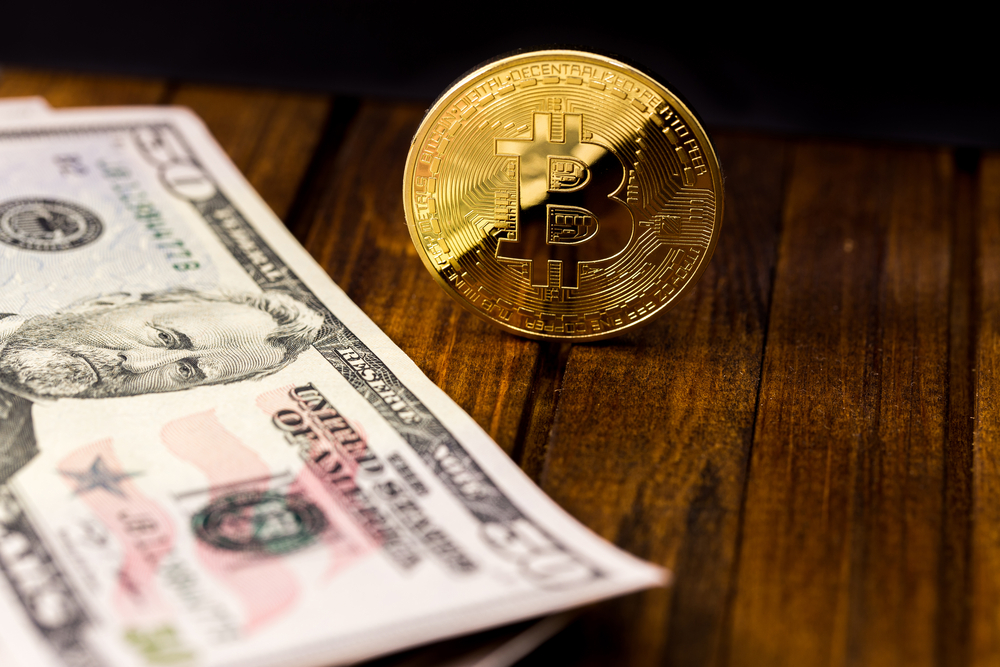Want Bitcoin To Replace Fiat? Here’s What’s Needed To Make It Happen

As bitcoin use keeps growing and gaining public attention, the question naturally arises: will it replace fiat currency?
Bitcoin’s price gains in 2015 and the current emergence of two competing bitcoin versions – Bitcoin Core and Bitcoin Classic – have raised expectations in some quarters that bitcoin could replace fiat currency, according to Bloomberg .
Bitcoin Debates Based On False Premise
Noah Smith, an assistant professor of finance at Stony Brook University and a freelance writer for finance and business publications, sees a fair amount of misunderstanding in these debates. Both topics – which bitcoin version will prevail and whether or not bitcoin will replace fiat – are debated under the assumption that long-term value is what makes a currency good. Smith argues that the opposite is true.
Many bitcoiners are not well grounded in monetary economics, Smith writes. Hence, they assume that for a currency to be valuable, it needs the backing of a valuable commodity, like gold. They assume that money is without value without such backing. Such a view likens money to a stock certificate, a placeholder marking ownership of something with intrinsic value. Money is equated with value.
Money’s main value rests not on intrinsic value but liquidity, Smith claims. This is different from stocks, gold, housing or other real assets.
Why Liquidity Matters
Liquidity refers to the ability to quickly and easily trade something for something else. Houses are not liquid since selling one can take months. Stocks are more liquid. Money, however, should be the most liquid entity of all as it provides the ability to pay for anything at any time. If a form of money can’t serve this purpose, a more liquid form of money is needed.
Money with no real asset backing can be “perfectly good,” Smith argues. What is needed is a common acceptance of money’s value. As long as people will take the money, it is good. No gold is needed.
What History Teaches
Alternative theories about money were put to the test during the Great Depression. The U.S. and European economies adhered to a gold standard prior to the Great Depression. National currencies could be exchanged for gold. When growth collapsed, some countries quit the gold standard in hopes that it would halt the deflation that was seen as a threat to growth.
The countries that left the gold standard did not experience hyperinflation, and their currencies did not collapse. As Harold James and Ben Bernanke noted in a 1990 paper, the nations that abandoned the gold standard started to recover. The chart from Brad DeLong’s blog shows the major transatlantic economies in the Depression.
The colored lines represent post-gold standard industrial production. Japan, an early mover, was the fastest to recover, while Germany and the U.S., which remained with the gold standard, fared worse.
While liquidity is the main source of monetary value, it is not the only source, skeptics will point out. Money is also needed to maintain its value for short time periods. One wants the value of what they exchange for money to closely match the value of things they spend it on.
Low volatility is needed to ensure money’s short-term store of value. This is the main problem with high inflation. It makes money’s value less certain in the short term.
This is why central banks work to sustain their inflation-battling credibility. If a central bank decides to devalue currency at a given time, it gives people the incentive to abandon the currency for alternative types of payment, such as bitcoin, a foreign currency or gold.
Concerns about central bank irresponsibility can become self-fulfilling prophecies.
Currencies And Stability
The currencies of prosperous nations like the U.S. and Japan are stable in value. The chart of U.S. consumer price index provides a measure of the dollar’s value.
Both the volatility of inflation and inflation itself rarely shifted dramatically from month to month, particularly after the 1990s. This state of affairs was expected to continue, and people do not view the U.S. dollar as risky in the short term. This is why the U.S. dollar remains a good form of money.
Bitcoin’s price, compared to the U.S. dollar’s value, gyrates wildly.
Risk Versus Returns
In the financial realm, low risk carries the price of poor long-term returns. The U.S. dollar’s value falls over time at a very slow and consistent rate. In exchange for providing a good short-term store of value, good money is a bad long-term investment.
Those seeking to replace fiat currency with bitcoin should focus on low volatility, Smith argues. Rather than getting people to invest in bitcoin, it makes better sense to find ways to stabilize the amount of real consumption of goods people can buy with bitcoin.
Smith’s suggestion is to peg the currency to the price of a Big Mac.
Images from Shutterstock. Charts from Bloomberg.

